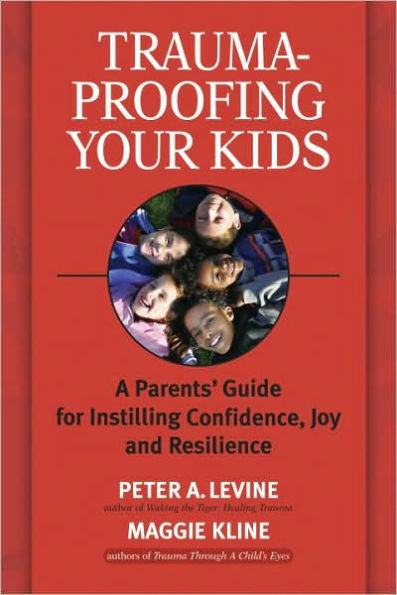Read an Excerpt
The bad news is that trauma is a fact of life. The good news is that so is resilience. Simply stated, resilience is the capacity we all possess to rebound from stress and feelings of fear, helplessness and overwhelm. The analogy sometimes given for resilience is that of a metal spring, such as a “Slinky.” If you pull it apart, the coil naturally rebounds to its original size and shape. Of course, if you stretch this spring too many times (or exert too much force), it will eventually lose its elasticity.People (especially young people), however, need not lose their resilience through wear and tear. On the contrary, we have the capacity to actually build and increase our resilience as we encounter the stresses and strains of life. Resilient children tend to be courageous. This doesn’t mean that they are attracted to dangerous situations, but rather that they are open and curious as they explore their world with gusto and exuberance. And, in their explorations, they inevitably have their share of rumbles and tumbles, collisions and conflicts.When resilient kids meet these forces of nature, they are open rather than shut down. Openness, indeed, is the characteristic that most typifies resilient kids. They are open to other children and enjoy sharing with them. At the same time, they are able to set boundaries of their own personal space and their possessions. They are in touch with their feelings, expressing and communicating them in age-appropriate ways. And, most of all, when bad things happen, they have a wondrous capacity (when supported) to breeze through them. They are the happy, lively children we wish we were. Their biggest challenges occur from events that could be potentially traumatic. Let’s delve into what types of life’s circumstances might cause such overwhelming reactions in our kids.Trauma can result from events that are clearly extraordinary such as violence and molestation, but it can also result from everyday “ordinary” events. In fact, common occurrences such as accidents, falls, medical procedures and divorce can cause children to withdraw, lose confidence, or develop anxiety and phobias. Traumatized children may also display behavioral problems including aggression, hyperactivity and, as they grow older, addictions of various sorts. The good news is that with the guidance of attuned parents and other caregivers who are willing to learn the necessary skills, children at risk can be identified and spared from being scarred for life, regardless of how devastating the events might be or seem.Parents are, at times, conflicted between protecting their children and permitting them to take the risks that build confidence and competence. It’s a tricky balancing act because as they master their world, children can also be traumatized when the unexpected inevitably happens. As much as you may try to “child-proof” your home, ultimately children—driven by their curiosity—will explore and get hurt. That is how they learn and they will have their share of falls, burns, electrical shocks, animal bites and other encounters with the non-forgiving forces of nature. No matter how hard we try, we cannot close our children off in an impenetrable (and inescapable) bubble of safety.Our children are frequently exposed to potentially traumatic events. But parents need not despair. It is possible to minimize the effects of the “ordinary” situations mentioned above, as well as those from extraordinary events such as natural and man-made disasters, including violence, war, terrorism and molestation. Are we being ridiculous by proposing that adults can “traumaproof” kids? We don’t believe so. Remember, although pain can’t be avoided . . . trauma is a fact of life . . . but so is resilience, the capacity to spring back.In this book you will learn practical tools to maximize your child’s resilience so that their equilibrium can be restored when they are stressed to their breaking point. Armed with this “recipe for resilience,” parents and other responsible adults can help to trauma-proof their kids while also generally increasing their tolerance to everyday stress. In this way they can truly become stronger, more caring, joyful and compassionate human beings. The word “trauma” pops up in the headlines of magazines and newspapers regularly. Popular TV shows such as The Oprah Winfrey Show bring understanding to millions of viewers regarding trauma’s gripping effect on body and soul. Trauma’s devastating impact on children’s emotional and physical well-being, mental development and behavior is finally getting the recognition it deserves. Since September 11, 2001, there has been an information blitz on how to cope with catastrophe.Despite this focus, however, precious little has been written regarding the common causes or the prevention and the non-drug treatment of trauma. Focus instead has been on the diagnosis and the medication of its various symptoms. “Trauma is perhaps the most avoided, ignored, belittled, denied, misunderstood, and untreated cause of human suffering.” (1) Fortunately, you—the parents, aunts, uncles and grandparents who nurture and protect children—are in a position to prevent, or at least mitigate, the damaging effects of trauma. In order to do the most good for the children in your care, first you need to recognize the roots of trauma. Next, we take a closer look at trauma—its myths and realities. In this way you will understand what may cause a child to remain overwhelmed even though the actual danger has passed.This book will teach you how to help children notice and move through painful sensations and feelings without undue distress...1. Peter A. Levine, Waking the Tiger: Healing Trauma (Berkeley, CA: North Atlantic Books, 1997).



